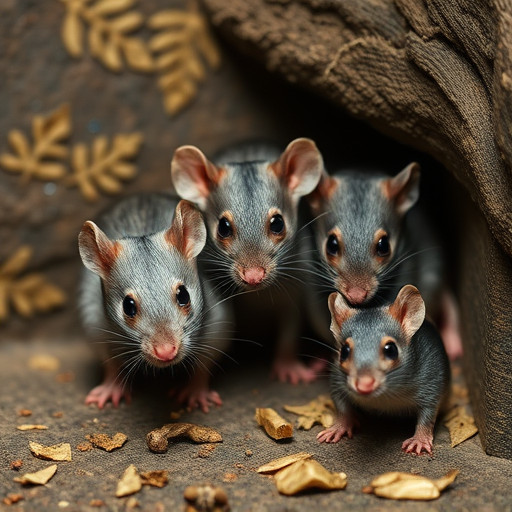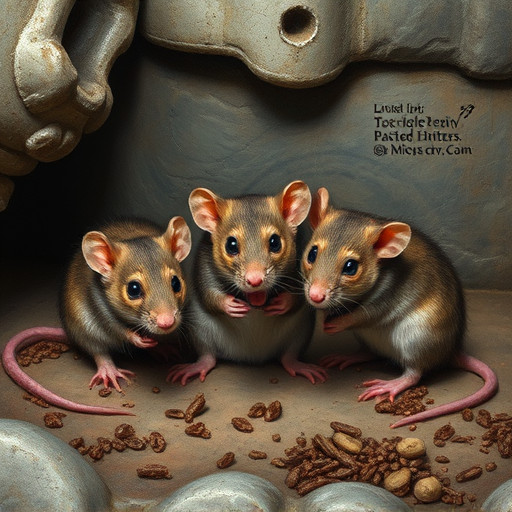Rodents in Vail, Arizona, display distinct activity patterns, peaking at twilight and night, with seasonal variations influenced by habitat needs and food availability. They prefer vegetative areas near water and human structures like attics and crawl spaces. Effective rodent control Vail AZ strategies involve regular inspections, preventive measures, understanding their dietary preferences, and strategically placing traps and baits to manage populations year-round.
In Vail, Arizona, understanding local rodent behavior is essential for effective pest management. This guide explores the daily and seasonal cycles, feeding habits, and communication methods of rodents in this region. We delve into their habitat preferences, revealing ideal environments and common habitats, including urban and rural settings. Additionally, we provide practical strategies for rodent control in Vail AZ homes and properties, covering non-toxic deterrents, professional extermination, and long-term prevention tips to ensure a pest-free environment.
- Rodent Behavior Patterns in Vail, AZ
- – Daily and Seasonal Activity Cycles
- – Feeding Habits and Food Preferences
Rodent Behavior Patterns in Vail, AZ

In Vail, Arizona, rodents exhibit distinct behavior patterns that are influenced by their habitat and environmental factors. These small mammals are particularly active during twilight hours and at night, making use of the dim light to navigate their surroundings with ease. They are also highly adaptive creatures, constantly seeking out new food sources and hiding spots. During the day, rodents tend to remain hidden in burrows or shelters, only emerging when necessary for food or water. This behavior makes them less visible but also requires a proactive approach for effective rodent control Vail AZ residents and local businesses may require.
Understanding their habitat preferences is key to managing rodent populations. Rodents in Vail commonly inhabit areas with abundant vegetation, especially those near water sources like rivers or irrigation systems. They are also attracted to human structures, seeking shelter in attics, walls, and crawl spaces where they can establish nests and raise their young. These behavior patterns and habitat choices highlight the importance of regular inspections and preventive measures for rodent control, ensuring a comfortable and secure living environment for Vail’s residents.
– Daily and Seasonal Activity Cycles

Rodents in Vail, AZ, like many other creatures, exhibit distinct daily and seasonal activity cycles that are crucial for understanding their behavior and habitat preferences. During the daylight hours, these agile animals are most active, particularly at dawn and dusk, when they forage for food and navigate their surroundings. In the warmer months, rodents tend to be more visible as they take advantage of the increased availability of food and water, expanding their activities into early evening. However, with the onset of winter, their behavior shifts, becoming less conspicuous as they seek shelter from the cold.
Seasonal changes significantly influence rodent habitats. In Vail’s diverse ecosystem, rodents prefer areas offering concealment, such as dense vegetation, brush piles, and woodpiles. During spring and summer, these habitats provide ample cover for nesting and rearing young. As autumn arrives, rodents start preparing for winter by storing food and finding protective shelters, often moving to more elevated grounds or seeking refuge in man-made structures, posing challenges for local rodent control in Vail AZ.
– Feeding Habits and Food Preferences

Rodents in Vail, AZ, like many other areas, exhibit diverse feeding habits and have specific food preferences that are essential to understand for effective rodent control. These small mammals are omnivores, meaning they consume both plant and animal matter. However, their primary diet consists of grains, seeds, fruits, nuts, and vegetables commonly found in agricultural fields and urban gardens. During the summer months, rodents often feed on fresh vegetation, while in winter, they rely more on stored food sources like grain reserves and bird seed.
Knowing their feeding habits is crucial for rodent control in Vail AZ. Homeowners and farmers should store food securely, maintain clean environments, and avoid leaving pet food unattended to deter rodents. Understanding these preferences allows for the strategic placement of traps and baits, making it easier to manage and control rodent populations effectively.
Understanding the behavior and habitat preferences of rodents in Vail, AZ, is crucial for effective rodent control. By recognizing their daily and seasonal activity cycles, as well as food preferences, residents can implement tailored strategies to mitigate rodent issues. This knowledge empowers folks to navigate the challenges of rodent infestations, ensuring a safer and more harmonious environment in Vail, AZ. When it comes to rodent control, knowledge is power, enabling proactive measures for a pest-free living space.
